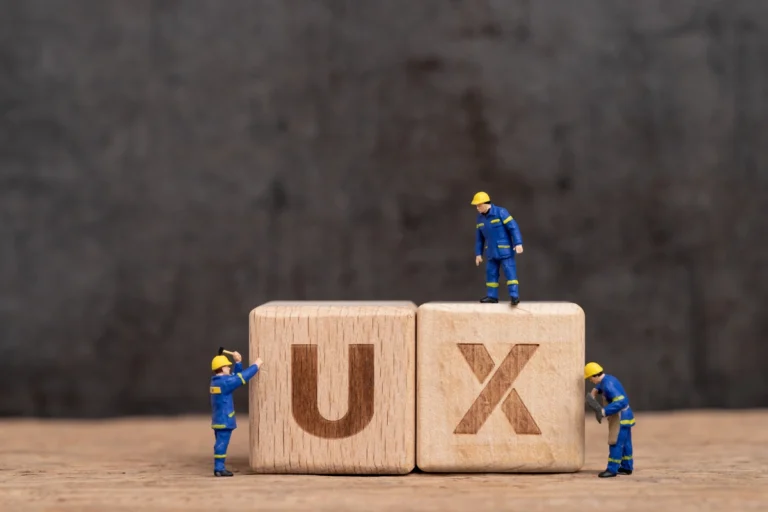Usability that pays off
UX/UI design is often overlooked in the world of industrial software. This is surprising, considering how crucial functionality is in manufacturing. Yet it’s the quality of the interface and the user’s comfort when interacting with the application that determine whether the system will be accepted by users, whether it will support business goals – or stand in the way of achieving them.
Let’s explore how UX/UI design can improve performance in your production facility.
What are UX and UI?
Let’s start with the basics. What does UX/UI mean?
UX (User Experience) refers to the overall experience a user has when interacting with a given system.
UI (User Interface) refers to the visual design and functionality of the interface through which the user communicates with the application.
So what is the function of UX and UI?
Put simply: a well-designed UI enables users to find the information they need quickly and intuitively, while well-designed UX reduces operation time, minimizes errors, and boosts overall organizational efficiency.
A well-designed interface highlights the most-used elements of the system – in line with the Pareto principle, where 20% of the functionality is used 80% of the time.

UX/UI – what can go wrong?
In many companies, system design starts with backend logic and development. The interface is treated as an afterthought. The result? Systems that work technically but are useless to the people who actually operate them.
All too often, developers design interfaces for themselves – from a technical perspective that doesn’t match the needs of non-engineers. User testing is postponed until the very end of the process, once the system is fully built – leading to delays and expensive corrections.
UX/UI cannot be treated as an optional add-on. It should be part of the planning process from day one – beginning with system vision, user needs analysis, and process design. The earlier you think about User Experience and User Interface, the fewer costly iterations you’ll face later.
UX/UI design – putting the user first
UX/UI design begins with understanding the environment in which the system will be used. Key questions include:
- Is the operator wearing gloves when using the screen?
- Do they work in a noisy environment, under time pressure?
- Will the interface be used on a PC, tablet, or touchscreen panel?
A touchscreen panel used with gloves requires a different design than a mobile-friendly app on a smartphone.
Test scenarios – a key part of UX/UI design
The best way to gather user feedback is to create test scenarios early in the project. First, we co-design mockups with users. Then, we prepare workflows that reflect real-world tasks performed in the system.
Testing should follow project milestones – not be left for the final phase when the user receives the system.

You have top-class systems, and yet something still doesn’t work right in your factory?
Contact us and let us show you how UX/UI design in industrial systems can support your company!
How to measure UX value?
One effective way to measure UX value is through hypotheses and success criteria. During planning, it’s important to define clear hypotheses – for example: „Currently, production reporting takes 15 minutes per day. The new system should reduce this to 5 minutes”.
If a system performs its functions not only correctly but also faster, more intuitively, and with minimal training – that’s a successful UX/UI project.
Measurable benefits of good UX/UI design:
- reduction in operator errors,
- faster system operation,
- shorter onboarding time for new employees,
- increased user acceptance,
- lower costs due to incorrect use.
The golden rule: after implementation, things should never take longer or work worse than before. It must be better and faster.
What about AI and low-code tools?
AI is helping to accelerate interface design – from screen generation to backend testing. It provides strong support in terms of logic and backend scenario execution.
But AI can’t replace human context. Artificial intelligence doesn’t truly understand the complexity of the real world – it doesn’t grasp that behind every user is a real person of a certain age, background, and experience.
A real user might be older, less experienced with modern systems, or working in difficult conditions. That’s why a human designer is essential – someone who can ask questions, listen, and design not only logically, but with empathy.

A shift in how companies approach UX/UI
We’re seeing a shift in how industrial companies think about UX and UI.
Let’s design UX/UI in parallel with backend logic, not after it’s finished.
Let’s plan user testing as an integral part of the process, not a dispensable extra.
Let’s make users co-creators of the system.
5 steps to great UX/UI
A solid UX/UI strategy includes five steps:
- Environment analysis – understanding who will use the system and under what conditions.
- Early-stage mockup design in collaboration with users.
- Test scenarios aligned with project milestones.
- Parallel development of the interface and system logic.
- Iterative testing with real users.
UX/UI is an investment, not a cost
A user-friendly and intuitive system supports business goals, reduces resistance to change, and helps you get the most from digitalization.
At explitia, we know that even the most advanced system won’t deliver value if it’s not accepted by its users.
That’s why we treat UX and UI not as a bonus, but as a foundation of successful implementation – planned from day one, tested at every stage, and measured with real business metrics.


